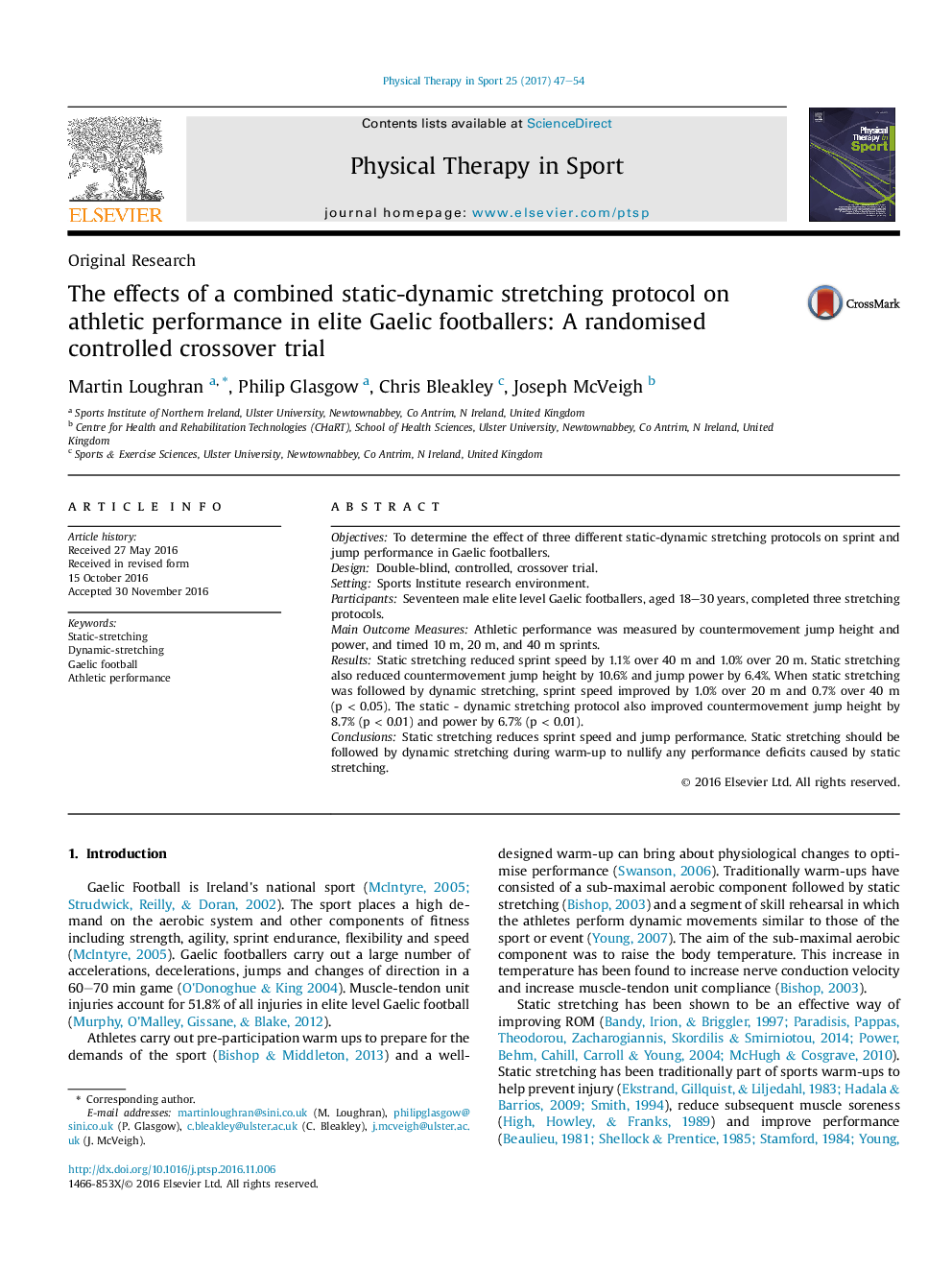| Article ID | Journal | Published Year | Pages | File Type |
|---|---|---|---|---|
| 5574814 | Physical Therapy in Sport | 2017 | 8 Pages |
â¢Negative effects of static stretching on performance are well known.â¢Static stretching may help prevent muscle injuries in running and sprinting activities.â¢Dynamic stretching can nullify the performance deficits caused by static stretching.â¢This is significant for program design, prescription and sequencing of exercises within a warm-up.
ObjectivesTo determine the effect of three different static-dynamic stretching protocols on sprint and jump performance in Gaelic footballers.DesignDouble-blind, controlled, crossover trial.SettingSports Institute research environment.ParticipantsSeventeen male elite level Gaelic footballers, aged 18-30 years, completed three stretching protocols.Main Outcome MeasuresAthletic performance was measured by countermovement jump height and power, and timed 10 m, 20 m, and 40 m sprints.ResultsStatic stretching reduced sprint speed by 1.1% over 40 m and 1.0% over 20 m. Static stretching also reduced countermovement jump height by 10.6% and jump power by 6.4%. When static stretching was followed by dynamic stretching, sprint speed improved by 1.0% over 20 m and 0.7% over 40 m (p < 0.05). The static - dynamic stretching protocol also improved countermovement jump height by 8.7% (p < 0.01) and power by 6.7% (p < 0.01).ConclusionsStatic stretching reduces sprint speed and jump performance. Static stretching should be followed by dynamic stretching during warm-up to nullify any performance deficits caused by static stretching.
